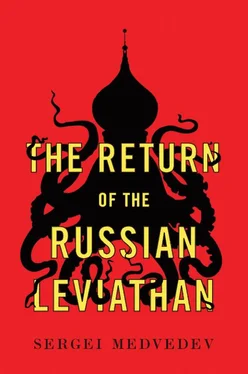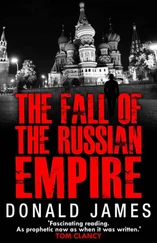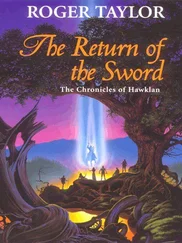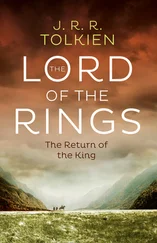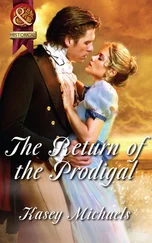Why is the state so afraid of these flowers? There’s a number of reasons. The first and most obvious one is that they are a ghost of the ‘colour revolutions’, which started in the ‘Carnation Revolution’ in Portugal in April 1974. According to the legend, it began when one woman from Lisbon placed a carnation in the barrel of the rifle of a soldier standing in front of her. It was the season for carnations, and people started handing out flowers to the soldiers. An almost bloodless military coup successfully took place on 25 April 1974, which put an end to one of the last dictatorships in Europe. After that, within a year, the Franco regime in Spain had ended, as had the Colonels’ Junta in Greece. Thirty years later, flowers returned to politics: in the wake of the ‘Rose Revolution’ in Georgia (2003) came the ‘Orange Revolution’ in Ukraine (2004) and the ‘Tulip Revolution’ in Kyrgyzstan (2005). Recent years have witnessed attempts at ‘colour revolutions’ in Belarus, Uzbekistan and Armenia. It’s more than likely that these have been exaggerated by journalists, but fear opens eyes wide, and ‘flower paranoia’ has firmly settled into the souls of post-Soviet autocrats.
Second, the history of spontaneous memorials is a battle for the city’s space: who does it belong to, the state or the citizens? The whole of late-Soviet and post-Soviet history can be presented as a process whereby civil protest has taken over areas in Moscow, from the demonstrations attended by hundreds of thousands on Manezh Square and at the Luzhniki Stadium in 1990–1, and from the protests and scuffles around the White House (at the time the home of the Russian Parliament) in 1991 and 1993, to the years-long battle with the ‘Strategy-31’ opposition movement behind the Mayakovsky statue on Triumphal Square on Tverskaya Street. The ‘Strategy’ movement was rallying for the right to demonstrate seven times a year, on the thirty-first day of each month of that length, thus carrying out the freedom of assembly guaranteed by Article 31 of the Russian Constitution. Demonstrations in 2011–13 widened the geography of the battle: now it included Chistoprudny Boulevard, Bolotnaya Square and Sakharov Prospekt, as well as the Garden Ring Road, which, in February 2012, protestors turned into ‘the White Ring’, creating along it a living chain made from white ribbons, the symbol of the opposition. In moving around the city, these protests have been creeping ever closer to the Kremlin, and the murder of Nemtsov on 27 February 2015 unexpectedly and visibly placed a bloody spot and created a place of memory right alongside the walls of the Kremlin. The fifty thousand people who went in procession to the place three days later in the March of Remembrance didn’t just pay their final respects to the murdered politician; they also threw down a challenge to the people behind these walls, whom they considered to be either directly or indirectly linked to the killing.
And third, the story with the flowers on the bridge is a battle for memory, which in recent times has become the scene of the sharpest political confrontations. ‘The Memorial Era’, the arrival of which was declared by the French historian Pierre Nora, turned out in Russia to be an unprecedented attack by the state on the historic memory of the nation, a vociferous battle with ‘falsifiers’ and ‘vilification’, the censoring of intellectual discussion. The country is presented with an edited version of Russian history, which is simply a chronicle of victories and accomplishments in praise of the state, in which there is no place for victims, human suffering or the question of responsibility for the crimes of the regime – from the Stalinist repressions of 1937 to the shooting of the Polish officers at Katyn in the spring of 1940; from the invasion of Prague in 1968 to the invasion of Afghanistan in 1979. In exactly the same way, the propaganda wipes out the memory of the newest victims of hatred, the political murders of the past thirty years: the journalists Dmitry Kholodov and Vladislav Listyev, Yury Shchekochikhin and Anna Politkovskaya; politicians Sergei Yushenkov and Galina Starovoitova; the editor-in-chief of Russian Forbes magazine Paul Khlebnikov, and the Chechen human rights’ defender Natalia Estemirova; the secret service agent Alexander Litvinenko, and the lawyer Sergei Magnitsky. This roll-call of martyrs can be continued, and Boris Nemtsov is simply the latest, and perhaps the best-known, victim on the list. But each of these cases has in common the state’s desire not to allow any public reaction.
They started to trample on Nemtsov’s memory within the first few hours after the tragedy: in the words of President Putin’s press secretary, Dmitry Peskov, Nemtsov was ‘little more than an average citizen, and he didn’t represent any political threat’; the Duma demonstratively refused to honour the memory of Nemtsov with a minute’s silence (only the deputies Dmitry Gudkov and Valery Zubov stood up); no member of the leadership, or any high-ranking city official, attended the memorial service or the funeral. In the same way, the sweeping away of the flower memorial on the bridge by anonymous cleaning staff and hooligans from the patriotic movement SERB [35] The extremist ‘South East Radical Bloc’ (SERB), which started up in Eastern Ukraine when the war began in March 2014, and has since been active in parts of Russia.
(they are the ones who vandalized Nemtsov’s grave in the Troekurovsky Cemetery, throwing away all the flowers and portraits that had been placed there) bears witness to the fact that the state is afraid of the people’s memory. That fear also led to pressure being put on the largest clubs and open spaces in Moscow so that they would refuse to hold a concert with some of the biggest names in Russian rock music in Boris Nemtsov’s memory on the fortieth day after his death.
The story of the flower memorial continues. And if the ghost of the ‘colour revolutions’ lives on only in the frightened heads of the inhabitants of the Kremlin, or still stalks places far away from Russia, if the authorities can win the battle for the city only by administrative bans and police barriers, then they have already hopelessly lost the battle for memory. The meme ‘Nemtsov bridge’ went viral on the Internet, a memorial plaque was put up on the house where Nemtsov lived, a movement is growing to name a street in Moscow after the murdered politician, and the memorial on the bridge has already been firmly established in the Moscow topography of protest. They can ban it and put a permanent police guard on the bridge – but if they do, people will simply take their flowers elsewhere, or to a third place: there are many places in Moscow linked to Boris Nemtsov. Perhaps they could ban the sale of flowers in the city (which, incidentally, the Russian authorities are more than capable of doing…). The paranoia surrounding the clearing away of the flowers and prevention of the concert from taking place, and the agreement of the leading figures in the state to remain silent, all indicate that Nemtsov was far from being ‘an average citizen’. The state fears him more after his death than they did when he was alive – which only goes to show the size of his personality and the significance of Nemtsov as a figurehead.
WHO’S AFRAID OF SVETLANA ALEXIEVICH?
The inventor of dynamite, Alfred Nobel, simply couldn’t have imagined what sort of bomb he was placing under the Russian mass consciousness when he introduced his Nobel Prize for Literature. Of the five Russian language laureates of the twentieth century – Ivan Bunin in 1933, Boris Pasternak in 1958, Mikhail Sholokhov in 1965, Alexander Solzhenitsyn in 1970 and Joseph Brodsky in 1987 – four of them were persecuted in their motherland. ‘White Guard’ Bunin; [36] ‘White Guard’ refers to the Russian Civil War of 1917–22, when ‘the Reds’ – the Bolsheviks, who had carried out the Revolution in November 1917 – defeated the supporters of the former Tsarist system and anyone else who opposed them. Collectively, they were known as ‘the Whites’ or ‘the White Guards’. Bunin hated Bolshevism and left Russia in 1920, never to return. He lived most of the remainder of his life in France, until his death in 1953.
‘Anti-Soviet’ Pasternak; ‘Traitor’ Solzhenitsyn; and ‘Parasite’ Brodsky: their Nobel Prizes were seen in the USSR as a political provocation, leading to them being defamed in the press and judged by the masses (Brodsky was slightly less affected by this than the others, since the Soviet era was already ending). If we add in the Nobel Peace Prizes awarded to the dissident Andrei Sakharov in 1975 and Mikhail Gorbachev in 1990, a year before the collapse of the USSR, then we see a very clinical picture: instead of being proud of its laureates, on each occasion Russia rejected them, united not by joy in the country’s achievements, but by hatred for the West. Or, more precisely, by an eternal paranoia, a conviction that the outside world is doing this simply because it is plotting against us.
Читать дальше
